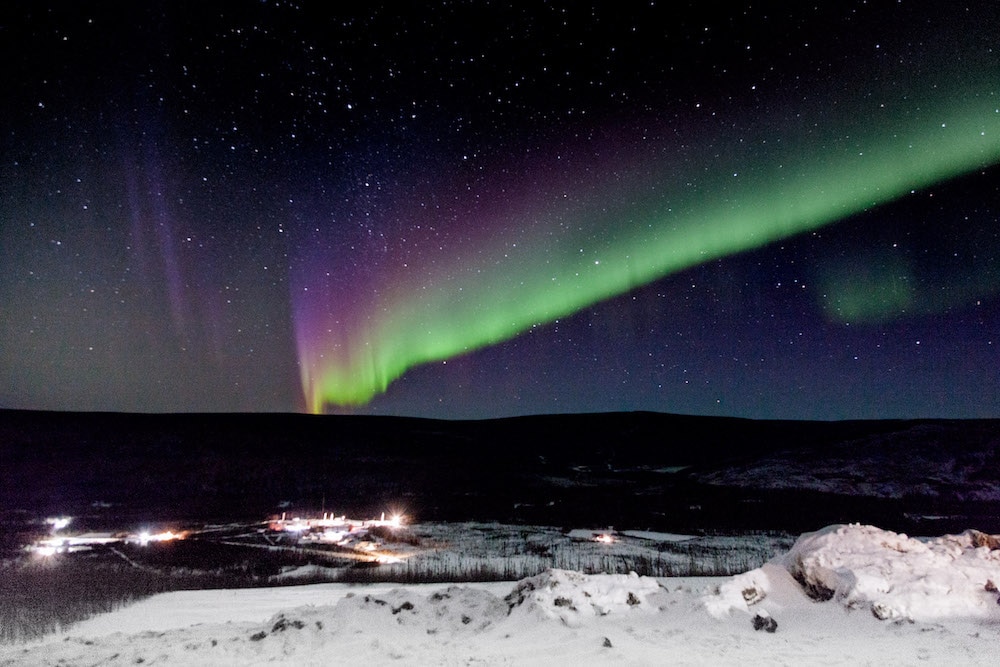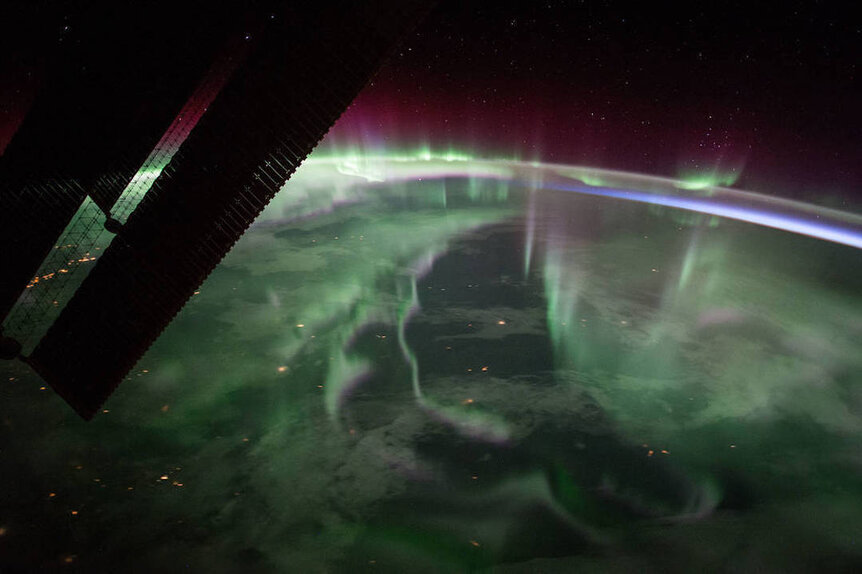Create a free profile to get unlimited access to exclusive videos, sweepstakes, and more!
What Are the Northern (and Southern) Lights, Really?
A special night-time light show, direct from the surface of the Sun.

There is nothing more powerful in the solar system than the Sun. The Sun’s immense heat and pressure fuses hydrogen atoms in its core and provides our planet with all of the light and warmth it needs, and sometimes a little extra. Every 11 years the Sun reaches the peak of its own internal cycle and kicks off a period of increased activity on the surface. The Sun’s magnetic field lines get all twisted up in preparation for its North and South Poles to flip position, generating sunspots, solar flares, and coronal mass ejections (CMEs) in the process.
It’s one of those CMEs which promises the end of our species in Solar Attack (streaming now on Peacock), when an excess of energy from the Sun threatens to ignite methane in the atmosphere and set the sky on fire. In the real world, geomagnetic storms from CMEs can’t turn our planet into an air fryer, but they do interact with gasses in the atmosphere. We call those interactions the aurorae.
What Are Auroras (AKA the Northern and Southern Lights) and How Do They Form?
Coronal mass ejections are more than just intense bursts of sunlight, they are the release of huge globs of energetically charged plasma, sloughed off bits of the Sun itself. When they happen, we see their light about 8 minutes after they erupt, but the solar matter itself can take a few days to arrive and smash into the Earth’s magnetic field.
Most of the energy gets deflected by the planet’s magnetic force field, but some of it breaks through and gets tangled up in the field lines. Charged particles concentrate themselves at the Earth’s North and South Poles, where the magnetic field’s influence is strongest, before traveling toward the equator. They don’t usually get that far, which is why auroras tend to only be visible near the poles. However, as we approach the peak of Solar Cycle 25 and encounter more powerful and more frequent solar activity, auroras could show up anywhere from Minnesota’s Voyageurs National Park in the north to New Mexico in the south, maybe even farther.
For More on the Northern Lights:
Stunning Aurora Caused by Severe Geomagnetic Storm
Upcoming Solar Maximum Will Paint the Sky with Northern Lights
NASA Just Zoomed a Rocket Right into the Northern Lights
That's step one, an energy dump from the Sun in the form of charged particles. When the aurora happens in the Northern Hemisphere, it is called the aurora borealis or the northern lights. In the southern hemisphere it is called the aurora australis or the southern lights. The only real difference is where they show up in the sky, the processes which create them are the same regardless of hemisphere. All of that energy from the Sun is only the first ingredient in the aurora recipe. The light show can’t really kick off until it hits the atmosphere. That's step two.
When the Sun has an outburst, unleashing CMEs, the flood of charged particles travel down the magnetic field lines and interact with molecules in the upper atmosphere. The molecules soak up the buffet of energy and spit it back out in the form of light. Neon signs work by exciting gasses trapped inside a glass tube, and that’s pretty much what’s happening in the sky during an aurora.
The waving lines of an aurora are determined by the fluctuations of the Earth’s magnetic field lines, giving us a glimpse into that usually invisible planetary defense system. The colors of the aurora’s shifting lines tell us something about the molecules being excited. Earth’s atmosphere is made mostly of nitrogen, which lights up blue or purple, and oxygen, which lights up green or red.
The northern and southern lights have captured the imaginations of people for thousands of years, and for good reason. From a certain point of view, the auroras only happen because the Sun occasionally burns up (or at least excites) tiny pieces of the sky. We’re fortunate the result is so pretty and decidedly undangerous.
See what happens when the Sun takes the aurora to an extreme in Solar Attack, streaming now on Peacock.



























